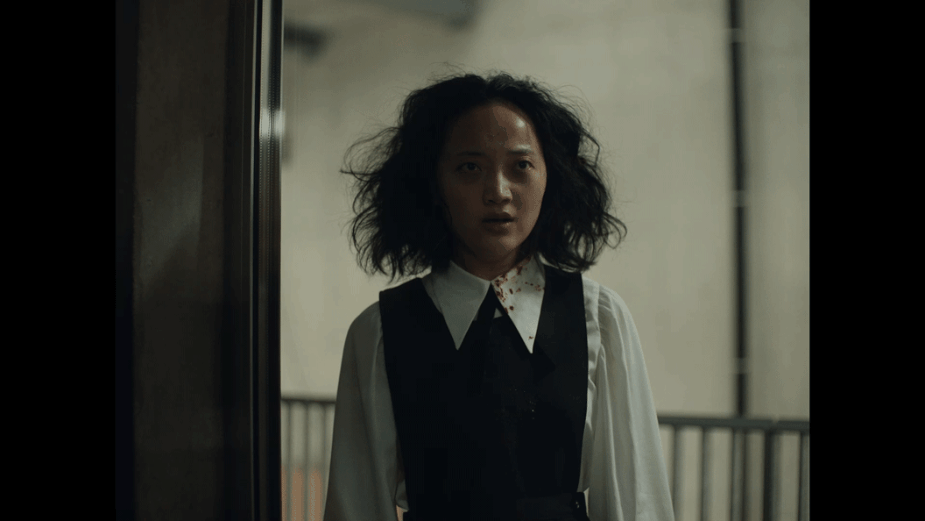
LBB Film Club: SHÉ(Snake)

‘She(Snake)’ is a film you’re not likely to forget soon after watching it. A story that at first glance might seem terrifying, but turns into something profoundly beautiful - a coming-of-age tale about protagonist Fei, and her antagonist Mei, who in the end come together to overcome the internalised hate they’re both familiar with.
Chinese-American director Renee Zhan tells me the film began through the NFTS and BBC Film Bridge to Industry programme, and was almost two years in development, during which time the script strengthened.
The initial idea came from what Renee says she’s had a taste of plenty of times: “The experience of being in the same room with another Asian woman, and inevitably being mixed up and called each other’s names, no matter how different or alike you may look. It’s a feeling a lot of minorities know - the feeling of being replaceable. If you’ve felt it enough times, it becomes internalised. And once you internalise it, you start to see others who look like you not as allies or potential friends, but as enemies. Yourself, as something monstrous.”
This feeling is what ‘She(Snake)’ is about, without becoming just “another gritty social-realist film” focused on minority struggles. Renee wanted something fun, spooky and uplifting, which the film turned out to be in the end.
As we watch Fei get acquainted with the antagonist, Mei, whom she has demonised, we see her own demons literally start to come out of her (or more precisely her neck), in the form of differently sized and shaped monsters.
LBB’s Zoe Antonov spoke to Renee to find out more about the incredible craft that went into the film and more.
LBB> Renee, talk me through the character building of Fei, and the most important supporting characters around her.
Renee> Fei is a very lonely girl under a lot of pressure, from her orchestra director, society around her, and her family. Throughout the film, we follow her subjective point of view. So when Mei, another Chinese violinist, shows up to the orchestra, we see her as inherently creepy, a threat. But Mei herself is just a sweet and kindhearted girl. It was important to me to portray that distinction, that there was nothing inherently threatening or ‘evil’ about Mei herself, it was just Fei’s projection onto her that made her into an antagonist.
LBB> Would you consider this a coming of age story and why?
Renee> Definitely! I think every film I make is a coming of age story. For me, coming of age is about growing up, and I think growing up can happen at any age. This film is about a girl learning something new about herself, and making her first friend

LBB> Talk to me about the sound in the film. Obviously, playing the violin is a major element, but the sound design is incredible overall, especially the way the hissing is intertwined throughout. What were you trying to achieve with it and in which moments was it most crucial?
Renee> I was lucky enough to work with an incredibly talented sound designer, Ed Trousseau. We’ve worked together on several projects before, and have built up a shorthand language and way of working. He even has a ‘squishy’ catalogue of sounds that he’s built up from our many collaborations together.
The hissing in the film represents Fei’s internalised racism. The students in the hallway bully her by hissing at her. Fei starts to hear Mandarin Chinese, her own mother tongue, as hissing. The creatures in the film, which are Fei’s inner demons that have taken external form, at the climax of the film start a cacophony of hissing at her. Finding the balance of realistic hissing versus dream hissing was one of the biggest and most creatively rewarding challenges of the sound design process.
LBB> What is the meaning of the snake in the narrative and why did you choose a snake?
Renee> The ‘snake woman’ or ‘dragon lady’ is a racist trope often used in media to portray Asian female characters. I wanted to reclaim this trope and make use of it in my own narrative, in the same way, that Fei and Mei reclaim their Asian-ness at the end of the film and create a unique and beautiful form of music with it.

LBB> What is the dish that the main character consumes before the wound on her neck gets worse and essentially creates the small bug-versions of herself? Is it directly related to this development?
Renee> Tangyuan (mochi rice balls) are a Chinese dish traditionally eaten in the New Year. I used to hate this dish growing up because I always thought the extremely sticky rice balls would get stuck in my throat. And I always thought they looked like creepy insect eggs. So in the film, I used them to symbolise the eggs that would grow on Fei’s neck.
LBB> How did you physically create the different insects coming out of her neck, and as they grew in size through the film, did you have to make more? Talk me through the creative process.
Renee> The creatures began as sketches I did of the scariest monsters I could imagine. Unfortunately, as often happens to me, the drawings turned out a bit cute. We decided to embrace the creepy/cute characteristics of the creatures, and lean into it. I’m happy with the unique playful tone that was created for the film.
The smallest creatures (we called them baby maggots) were created as simple wax sculpts. Wax was a great medium to use because it gave the translucent effect that insect larvae often have. And as a sculptable medium, I could animate them growing and changing in shot.
The adult puppets were full silicone puppets with wire armatures, created by supremely talented puppet maker, Helen Ferguson.
LBB> How were Fei's insects given her face and what kind of craft went into that? How did you achieve that melting scene in the end?
Renee> The creatures’ bodies were all animated using frame-by-frame stop motion animation. The live action actress’ face plates were first shot on green screen, so that we could animate the motion of the bodies to align with the faces. We also built a miniature set to match the live action set. There are shots with creatures comped into live action, and there are other shots with live action actors comped into stop motion sets. It was an overly complicated and often painful process, led skillfully by VFX supervisor Szymon Wyrzykowski.
The melting scene was achieved through close collaboration with lead puppet maker Helen Ferguson and animation DoP Martyna Jakimowska. Helen created unique versions of the puppets made out of plasticine and a gelatin mixture, with hard skeletons underneath. The plasticine puppets I animated melted frame by frame on set. The gelatin snake we captured in live action by melting with a heat gun on set - a process inspired by the melting skull in Indiana Jones. We had quite a fun time on set with the melting, as the creatures’ hair was made out of real goat hair. When we got too close with the heat gun, the burning goat hair made for a very unique smelling set!
LBB> Once the insects melted, they left behind their skeletons, two of which Mei and Fei played as their new instruments. Talk to me more about this scene and how these instruments were physically made.
Renee> The bone instruments were designed by production designer Qingling Zhang and fabricated by talented modelmaker Rob Hazeldine. They were modelled after Chinese traditional instruments, the Erhu and Pipa. The scene is about Fei and Mei reclaiming their Chinese-ness, finding something beautiful in what they once thought was the most ugly thing about themselves, and coming together as friends to create something lovely.












